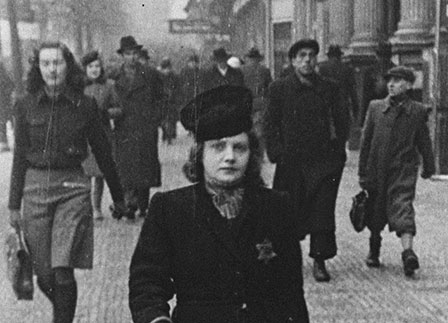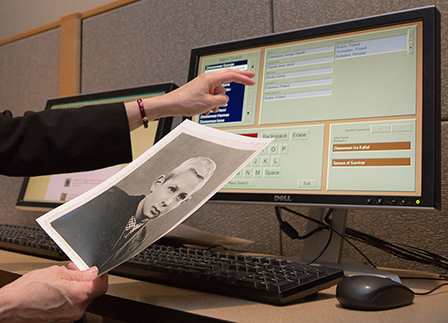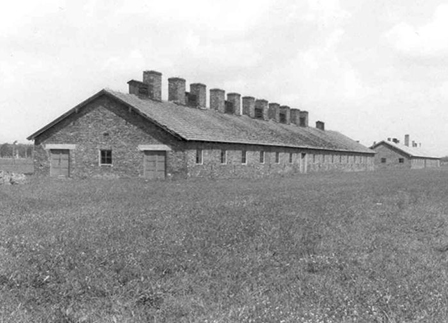- Biography
- Mendel Grosman (1913-1945), Lodz ghetto photographer, was the son of Shmuel Dawid Grosman (b. June 15, 1882) and Chana Ruchla (b. February 13, 1887). Mendel was born on June 27, 1913. His oldest sister Rut immigrated to the United States in 1919. He had one brother Jakub who died of an appendicitis, and two other sisters. Feiga Grosman Frajtag was born 1910. She was married to Szymon Frajtag (b. 1904) amd had a son, Jakub (Jankush) born in 1938. His younger sister Roszka (Rojza Miriam ) was born on January 20, 1918.
Though raised in a Hasidic home, Grosman took an early interest in painting and studied with the artist Szylis, before devoting himself to photography. During the 1930s Grosman photographed the Habimah theater during its tour in Lodz. He was also commissioned by a Jewish children's health organization to photograph a series of images for an album on the Jewish child in Poland, but the album was never published. During World War II, Grosman was forced to move into the ghetto, where he lived with six other members of his extended family. At the end of 1941 the Lodz ghetto Jewish council created an official photography section made up of eleven photographers, including Grosman and Henryk Ross, whose job it was to take photographs for identity cards, photograph official ceremonies, ghetto products and exhibitions, and ghetto buildings that were about to be demolished. In addition to these official photographs, Grosman took thousands of illegal photos documenting Jewish life and death in the ghetto, including the Jewish youth movements in Marysin, street scenes shot from his apartment window, the fecalists at hard labor, hangings, deportations and bodies piled in the morgue at the Jewish cemetery. He also took many pictures of his extended family, especially his young nephew Yankele (Yankush) Freitag, who for Grosman symbolized the ghetto child.
Most of Grosman's immediate family died in the ghetto. His father died on March 7, 1942, his mother died on July 16, 1942 and his brother-in-law Szymon Frajtag died the same year. His nephew Yankel died of hunger in 1943. Right before the final liquidation of the ghetto in August 1944, Grosman asked his friend Arie ben Menahem to help him hide his collection of 10,000 negatives. They placed a portion of the collection in a wooden box and hid it inside a hollowed out section of wall beneath a window pane in his apartment. Another portion of the collection, including some prints and a camera, were hidden with the help of another friend, Nachman Zonabend, in a cellar.
Deported during the liquidation of the ghetto, Grosman ended up in the Konigswusterhausen concentration camp in Germany. When this camp was evacuated on April 26, 1945, Grosman was sent on a death march, during which he was shot to death by an SS guard after tripping along the way. His sister Fajda was deported to Auschwitz where she perished.
After the war much of Grosman's photographic collection was retrieved by Zonabend and Grosman's sister, Ruszka. Roszka (now Zilbar) sent the wooden box of negatives to Kibbutz Nitzanim in Palestine, where Arie ben Menahem was then living. These negatives were later lost when the kibbutz was overrun by the Egyptians during the Israeli War of Independence and its residents taken captive. In Egypt, Ben-Menahem saw a picture in a local paper with the caption "bread line in Tel-Aviv," which was actually one of Grosman's Lodz ghetto photographs. To him, this was proof that the negatives still existed, but all efforts to locate them have been in vain.
[Source: "Mendel Grosman" video produced by Aliza Tzigler, Videofilm International 1988]



